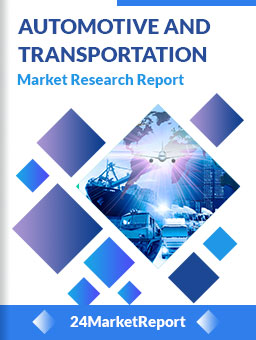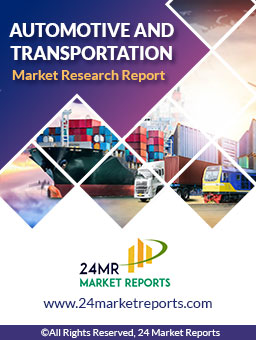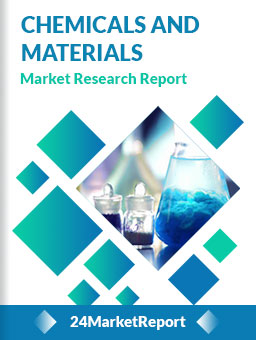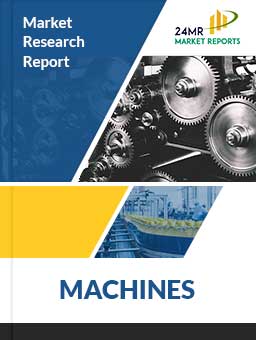The global Hydrogen and Electric Bus market size was estimated at USD 7596 million in 2024 and is projected to reach USD 28552.29 million by 2032, exhibiting a CAGR of 18.00% during the forecast period.
North America Hydrogen and Electric Bus market size was estimated at USD 2637.17 million in 2024, at a CAGR of 15.43% during the forecast period of 2025 through 2032.

Report Overview
Hydrogen and electric buses represent two prominent technologies in the transition to cleaner public transportation systems. Both aim to reduce greenhouse gas emissions and reliance on fossil fuels, but they differ significantly in terms of technology, infrastructure requirements, and environmental impact.
Hydrogen and Electric Bus Market provides a deep insight into the global Hydrogen and Electric Bus market covering all its essential aspects. This ranges from a macro overview of the market to micro details of the market size, competitive landscape, development trend, niche market, key market drivers and challenges, SWOT analysis, value chain analysis, etc.
The analysis helps the reader to shape the competition within the industries and strategies for the competitive environment to enhance the potential profit. Furthermore, it provides a simple framework for evaluating and accessing the position of the business organization. The report structure also focuses on the competitive landscape of the Global Hydrogen and Electric Bus Market, Hydrogen and Electric Bus Market introduces in detail the market share, market performance, product situation, operation situation, etc. of the main players, which helps the readers in the industry to identify the main competitors and deeply understand the competition pattern of the market.
In a word, Hydrogen and Electric Bus Market is a must-read for industry players, investors, researchers, consultants, business strategists, and all those who have any kind of stake or are planning to foray into the Hydrogen and Electric Bus market in any manner.
Global Hydrogen and Electric Bus Market: Market Segmentation Analysis
The research report includes specific segments by region (country), manufacturers, Type, and Application. Market segmentation creates subsets of a market based on product type, end-user or application, Geographic, and other factors. By understanding the market segments, the decision-maker can leverage this targeting in the product, sales, and marketing strategies. Market segments can power your product development cycles by informing how you create product offerings for different segments.
To know more about market statistics, Download a FREE Sample copy
Key Company
- Yutong Bus
- BYD
- King Long Motor Group
- New Flyer
- CRRC Electric Vehicle
- Foton AUV
- Solaris Bus & Coach
- MAN
- Farzion Auto
- Zhongtong Bus
- Volvo
- Mercedes-Benz Group
- Sunwin Bus
- Skywell
- Iveco Bus
- Ankai Automobile
- EBUSCO
- VDL Bus & Coach
Market Segmentation (by Type)
- Battery Electric Bus
- Plug-in Hybrid Electric Bus
- Fuel Cell Electric Bus
Market Segmentation (by Application)
Geographic Segmentation
- North America (USA, Canada, Mexico)
- Europe (Germany, UK, France, Russia, Italy, Rest of Europe)
- Asia-Pacific (China, Japan, South Korea, India, Southeast Asia, Rest of Asia-Pacific)
- South America (Brazil, Argentina, Columbia, Rest of South America)
- The Middle East and Africa (Saudi Arabia, UAE, Egypt, Nigeria, South Africa, Rest of MEA)
FAQs on the Global Hydrogen and Electric Bus Market (2024-2032)
1. What is the market size of the global Hydrogen and Electric Bus market in 2024?
- The global Hydrogen and Electric Bus market is valued at USD 7,596 million in 2024.
2. What is the projected market size by 2032?
- The market is expected to reach USD 33,691.71 million by 2032, growing at a CAGR of 18.00% during the forecast period.
3. What are Hydrogen and Electric Buses?
Hydrogen and electric buses are zero-emission public transport vehicles powered by either:
-
Hydrogen fuel cells, which generate electricity from hydrogen and emit only water vapor.
-
Battery-electric systems, which store energy in rechargeable lithium-ion batteries.
4. What is driving the growth of the Hydrogen and Electric Bus market?
-
Government policies supporting clean energy transportation
-
Stringent emission regulations reducing reliance on fossil fuels
-
Increased investments in hydrogen and electric infrastructure
-
Advancements in battery and fuel cell technology, improving efficiency
-
Rising fuel prices, making electric and hydrogen buses more cost-effective
5. What are the key benefits of Hydrogen and Electric Buses?
- Zero emissions – Helps combat climate change
- Reduced fuel costs – Lower operational expenses than diesel buses
- Improved energy efficiency – Electric and hydrogen buses consume energy more efficiently
- Quieter operations – Reduces noise pollution in cities
- Government incentives & subsidies – Financial support for adoption
Key Benefits of This Market Research:
- Industry drivers, restraints, and opportunities covered in the study
- Neutral perspective on the market performance
- Recent industry trends and developments
- Competitive landscape & strategies of key players
- Potential & niche segments and regions exhibiting promising growth covered
- Historical, current, and projected market size, in terms of value
- In-depth analysis of the Hydrogen and Electric Bus Market
- Overview of the regional outlook of the Hydrogen and Electric Bus Market:
Key Reasons to Buy this Report:
- Access to date statistics compiled by our researchers. These provide you with historical and forecast data, which is analyzed to tell you why your market is set to change
- This enables you to anticipate market changes to remain ahead of your competitors
- You will be able to copy data from the Excel spreadsheet straight into your marketing plans, business presentations, or other strategic documents
- The concise analysis, clear graph, and table format will enable you to pinpoint the information you require quickly
- Provision of market value data for each segment and sub-segment
- Indicates the region and segment that is expected to witness the fastest growth as well as to dominate the market
- Analysis by geography highlighting the consumption of the product/service in the region as well as indicating the factors that are affecting the market within each region
- Competitive landscape which incorporates the market ranking of the major players, along with new service/product launches, partnerships, business expansions, and acquisitions in the past five years of companies profiled
- Extensive company profiles comprising of company overview, company insights, product benchmarking, and SWOT analysis for the major market players
- The current as well as the future market outlook of the industry concerning recent developments which involve growth opportunities and drivers as well as challenges and restraints of both emerging as well as developed regions
- Includes in-depth analysis of the market from various perspectives through Porters five forces analysis
- Provides insight into the market through Value Chain
- Market dynamics scenario, along with growth opportunities of the market in the years to come
- 6-month post-sales analyst support
Customization of the Report
- In case of any queries or customization requirements, please connect with our sales team, who will ensure that your requirements are met.
Chapter Outline
- Chapter 1 mainly introduces the statistical scope of the report, market division standards, and market research methods.
- Chapter 2 is an executive summary of different market segments (by region, product type, application, etc), including the market size of each market segment, future development potential, and so on. It offers a high-level view of the current state of the Hydrogen and Electric Bus Market and its likely evolution in the short to mid-term, and long term.
- Chapter 3 makes a detailed analysis of the market's competitive landscape of the market and provides the market share, capacity, output, price, latest development plan, merger, and acquisition information of the main manufacturers in the market.
- Chapter 4 is the analysis of the whole market industrial chain, including the upstream and downstream of the industry, as well as Porter's five forces analysis.
- Chapter 5 introduces the latest developments of the market, the driving factors and restrictive factors of the market, the challenges and risks faced by manufacturers in the industry, and the analysis of relevant policies in the industry.
- Chapter 6 provides the analysis of various market segments according to product types, covering the market size and development potential of each market segment, to help readers find the blue ocean market in different market segments.
- Chapter 7 provides the analysis of various market segments according to application, covering the market size and development potential of each market segment, to help readers find the blue ocean market in different downstream markets.
- Chapter 8 provides a quantitative analysis of the market size and development potential of each region from the consumer side and its main countries and introduces the market development, future development prospects, market space, and capacity of each country in the world.
- Chapter 9 shares the main producing countries of Hydrogen and Electric Bus, their output value, profit level, regional supply, production capacity layout, etc. from the supply side.
- Chapter 10 introduces the basic situation of the main companies in the market in detail, including product sales revenue, sales volume, price, gross profit margin, market share, product introduction, recent development, etc.
- Chapter 11 provides a quantitative analysis of the market size and development potential of each region during the forecast period.
- Chapter 12 provides a quantitative analysis of the market size and development potential of each market segment during the forecast period.
- Chapter 13 is the main points and conclusions of the report.







 Industry Market Size
Industry Market Size SWOT Analysis
SWOT Analysis Industry Major Players
Industry Major Players Revenue Forecasts
Revenue Forecasts Historical and Forecast Growth
Historical and Forecast Growth Profitability Analysis
Profitability Analysis
























